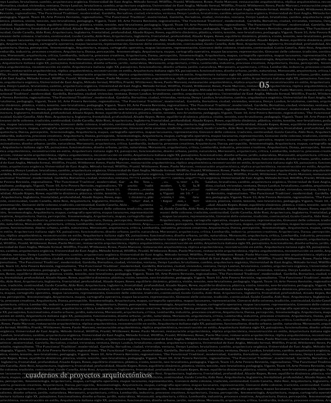James Stirling Regionalismo y modernidad
Palabras clave:
Revisión, Regionalismo, 'The Functional Tradition', Modernidad, Review, Regionalism, ModernityResumen
Resumen
En los años treinta, la arquitectura moderna se había introducido en los más remotos lugares del mundo enfrentándose con la infinita idiosincrasia de lo local, y al mismo tiempo, el arquitecto, sintiendo las limitaciones de su estilo e intentando ampliar su vocabulario, se embarcó en un proceso de difusión, asimilación y personalización.
La idea de una renovada época después de la posguerra británica, sería compartida por una joven generación de arquitectos con el fin de encontrar una nueva forma de modernidad.
Si en sus proyectos domésticos de mediados de los cincuenta, James Stirling partió de una aproximación al regionalismo y a la 'tradición funcional' con el fin de renovar el lenguaje moderno, no abandonaría la idea 'programática' inicial de entender la arquitectura desde una consistencia formal y una lógica que combinaba 'una síntesis común del pasado reciente y una certera actitud hacia el futuro'.
Abstract
Thirties, modern architecture had percolated into remote corners of the world, encountering the infinite idiosyncrasies of locality, and, at the same time, Architects, feelings the limitations of their style and becoming intent upon extending their vocabulary, embarked upon a process of diffusion, assimilation and personalitation.
The idea of a renewed period after British postwar, was shared for a new young architects generationto find a new way of modernity.
While in his mid fifties housing projects, James Stirling approached to 'regionalism' and 'the functional tradition' to renew the modern language, he wouldn't reject the programmatic idea to understand architecture from a logic and formal consistency that combine 'a common synthesis of the recent past and a certain attitude toward the future'.
Descargas
Referencias
BANHAM, Reyner: The new brutalism: ethic or aesthetic. London, 1966.
BANHAM, Reyner: Theory and design in the first machine age. Architectural Press, Oxford 1960.
CREESE, W: The legacy of Raymond Unwin: a human pattern for planning. Cambridge, Mass. 1967.
CRINSON, Mark: Stirling and Gowan: architecture from Austerity to Affluence. Yale University Press, New Haven 2012.
LE CORBUSIER: Le Corbusier et Pierre Jeanneret: oeuvre complete. Birkhauser, Basel 1999.
RICHARDS, J.M: The functional tradition. Architectural Review, Enero 1950.
RICHARDS, J.M: The functional tradition. Architectural Review, Enero 1957.
RICHARDS, J.M: The Next Step?. Architectural Review, Marzo 1959.
ROWE, Colin: Mannerism & modern architecture. Architectural Review, Mayo 1950.
ROWE, Colin: The mathematics of the ideal villa: Palladio and Le Corbusier compared. Architectural Review, Marzo 1947.
RUDOLPH, Paul. Regionalism in architecture. Perspecta 4, 1957.
SUMMERSON, John. The Case for a Theory of Modern Architecture. RIBA Journal, Junio 1957.
STIRLING, James: From Garches to Jaoul. Le Corbusier as Domestic Architect in 1927 and 1953, Architectural Review, Septiembre 1955.
James Stirling: writings on architecture/ edited by Robert Maxwell. Skira, Milán 1998.
Regionalism and modern architecture. Architect's Year Book 8, 1957.
The functional tradition and expression. Perspecta 6, 1960.
VIDLER, Anthony. Histories of the immediate present: inventing architectural modernism., MIT, Cambridge, MA. London 2008.
James Frazer Stirling: notes from the archive. Yale University Press, New Haven, London 2010.
WITTKOWER, Rudolf. Architectural Principles in the Age of Humanism. Warburg Institute, London 1949.
Descargas
Publicado
Número
Sección
Licencia
1. Los autores conservan los derechos de autor y garantizan a la revista el derecho de una Licencia Creative Commons Atribución-NoComercial-SinDerivar 4.0 Internacional que permite a otros compartir el trabajo con un reconocimiento de la autoría.
2. Los autores pueden establecer por separado acuerdos adicionales para la distribución no exclusiva de la versión de la obra publicada en la revista (por ejemplo, situarlo en un repositorio institucional o publicarlo en un libro).












